Closing time seems to be my siren call. Especially when it comes to gardens. We were in Galway, Ireland, one afternoon when we im
pulsively decided to drive 90 minutes northwest to see Kylemore Abbey. Once a stately home, it’s now a Benedictine abbey, still famous for its postcard-pretty setting and restored Victorian walled garden.
There are only so many hours in a day, fewer in an afternoon, but our lightning visit was time well spent.
It was both a step into the past and an eye-opening link between past and present. Victoriana conjures a picture of formal gardens
that can only be maintained by an army of gar
deners. There’s certainly that at Kylemore. But, surprisingly, this Victorian garden also has things in common with the gardens of today. Read on to learn what.
Meanwhile, here’s what we saw on our way.
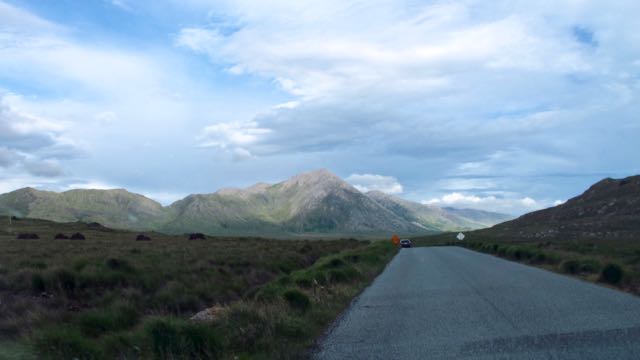
It’s hard to talk about one of Ireland’s most-photographed buildings without a hat tip to its setting, the wild and beautiful region of Connemara. This is the landscape Kylemore’s creators fell in love with and decided to build their love nest here. Originally called Kylemore Castle, it was built between 1867 and 1871 by Mitchell Henry, a Manchester cotton heir who turned liberal politician, and his beloved wife Margaret. It celebrated its 150th anniversary last month.
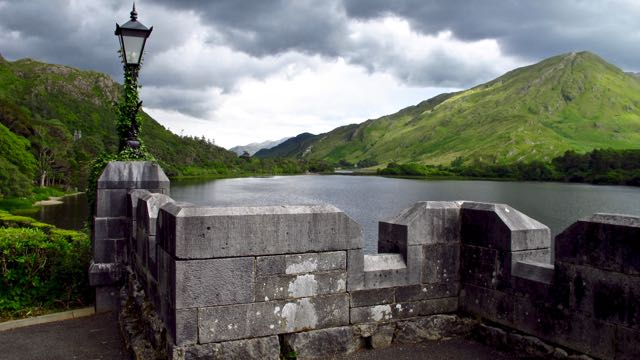
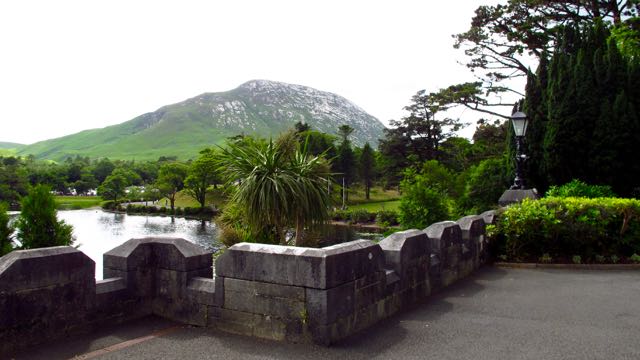
The Henrys brought many progressive ideas with them to this remote area. In a country still reeling from the Great Famine, the Henrys helped local workers learn trades when constructing Kylemore Castle and also to train as gardeners. He opened a school for tenants’ children and encouraged tenants to turn bogland into productive farmland.
From the Kylemore website: “[Henry] developed the Kylemore Estate as a commercial and political experiment and the result brought material and social benefits to the entire region and left a lasting impression on the landscape and on the memory of the local people.”
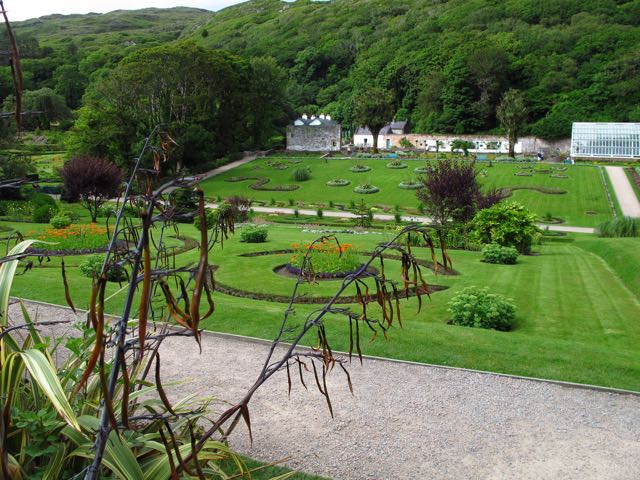
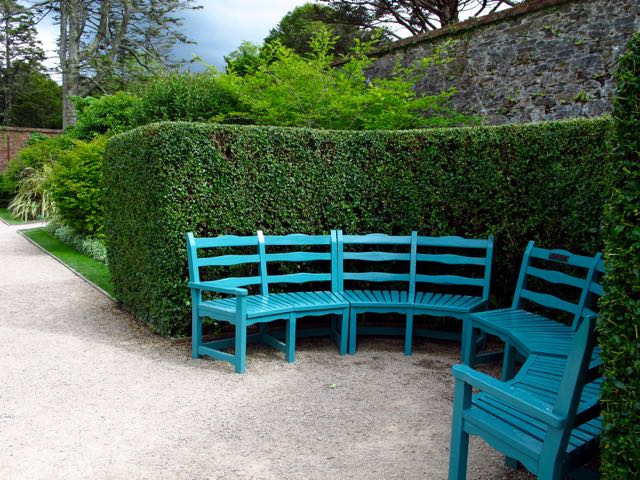

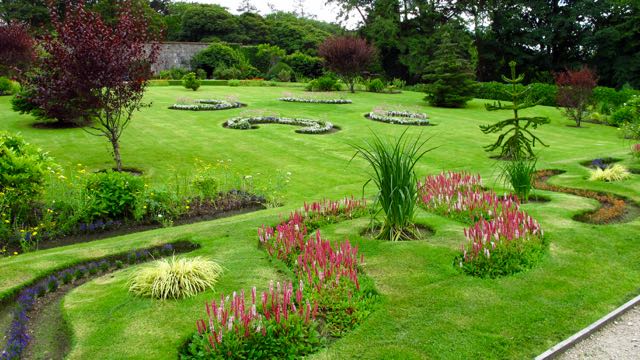
ts. Those cut beds were popular Victoriana, and the plants are said to be only those available in the late-1800s.
The home and garden were both high-tech for their day. From the Kylemore Abbey website: “One of the last walled gardens built during the Victorian period in Ireland it was so advanced for the time that it was compared in magnificence with Kew Gardens in London.” And that link mentions the army I talked about: 40 full-time gardeners.
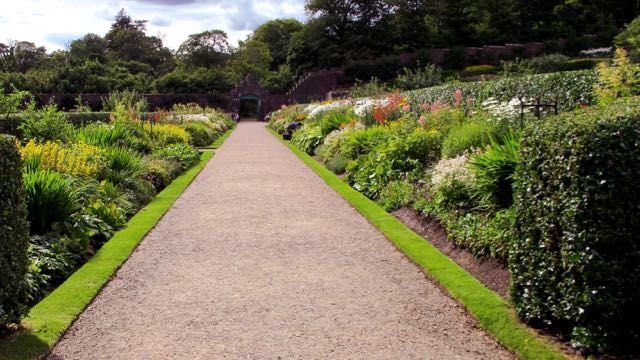
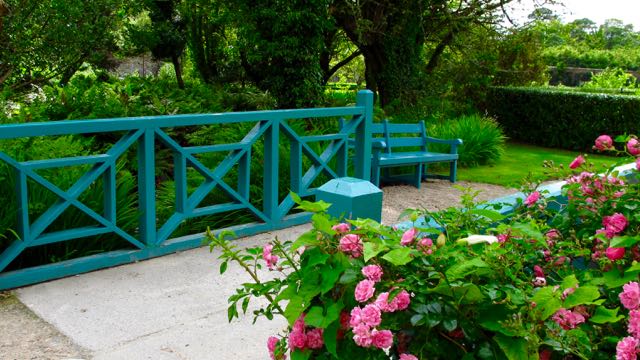
Those “more-practical” gardens include, of course, extensive kitchen gardens, for vegetables, herbs, fruits and nuts, which would’ve been intensively worked 150 years ago.
And, now, our point in common. The Victorian produce Kylemore Abbey focuses on is in high demand by modern gardeners: heritage varieties! I’d love to sample the goods at their weekly market, or take a master class with the head gardener. Tour around their website for info (I’d reorganize the site to make this easier to find.)

Part of the restoration has been to show what a gardener’s life would be like in the days of Mitchell and Margaret Henry. The cottage of the head gardener, the living quarters for the garden workers (the bothy), and a huge toolshed with Victorian tools illustrate the little onsite hamlet required to manage all the garden tasks.
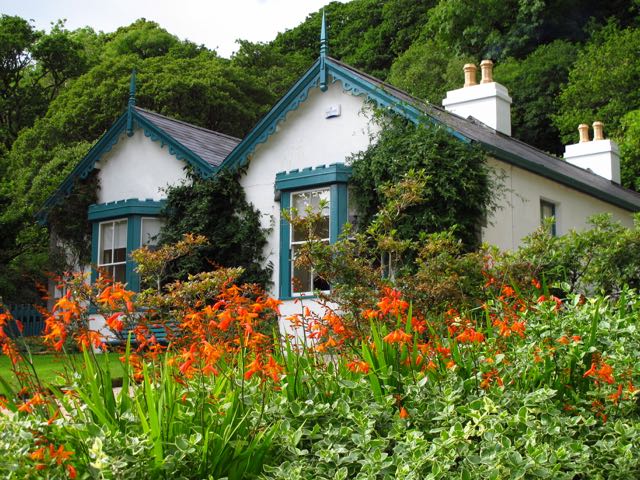
‘s head gardener’s cottage.
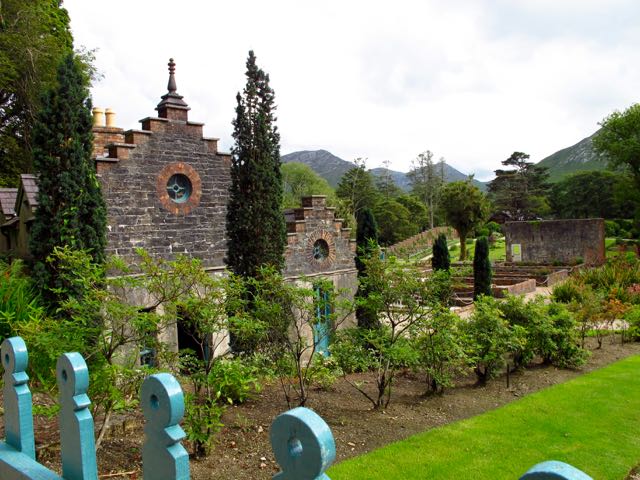
Walking through the interiors shows quite a contrast between the lifestyles of employees (two left images below) and managers (head gardener’s kitchen, right). Click any picture to open the gallery as a slideshow, which also gives a sharper view of the images. Nevertheless, the little beds and snug bothy kitchen with its peat fireplace might have been a step up in the world for those working here. What do you think?
The skeletons of the greenhouse infrastructure gives an idea of the scale of operations. These greenhouses were all heated using the latest mod-cons of the times. I’m not sure how a “lime kiln” works, but that was one source of heat, and pipes helped distribute it all through the 21 greenhouses, only one of which, the vinery, remains.
Remember, this is a living historic document, not a garden design to be critiqued. The geometric plantings and bold colours might not be your style, but they were the height of vogue during the reign of Queen Victoria.
The Victorians were crazy about new plants from exotic places, and often organized their garden beds like museum cases displaying their latest finds. Like them, I have an enduring fondness for monkey puzzle trees (Araucaria araucana).
The Henrys’ love story has a tragic ending. Margaret died in her early 40s when the family holidayed in Egypt. Some of my pictures show the spires of the small neo-Gothic church that Mitchell constructed on-site in her memory – with angels in place of gargoyles. The interior is particularly beautiful.
A parting look at the castle in context. The tiny white dot two-thirds up the mountain is a statue of Christ erected by the Benedictine nuns. The energetic can climb to it, or book themselves in for hikes through these scenic mou
ntains. Perhaps, I’ll have more time, next time…
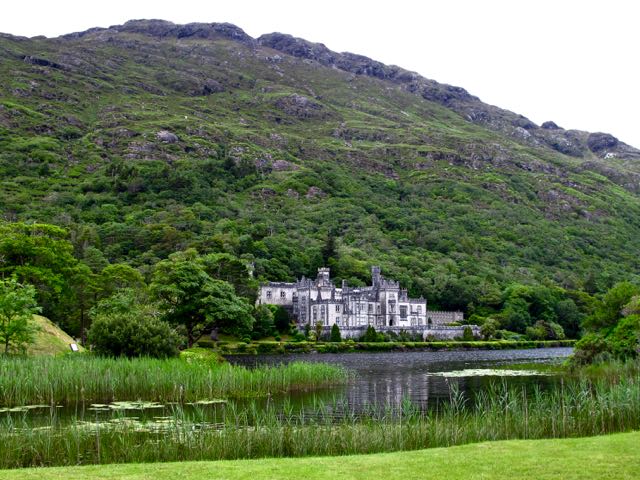
Want to visit more Irish gardens?
We know that Toronto gardeners like to visit gardens around the world. So for more on our garden travelogue of Ireland, you can also read our posts on:
- Hunting Brook, the garden of Jimi Blake
- The garden of Jimi’s sister June Blake in Blessington
- The historic Edwardian garden designed by Harold Peto

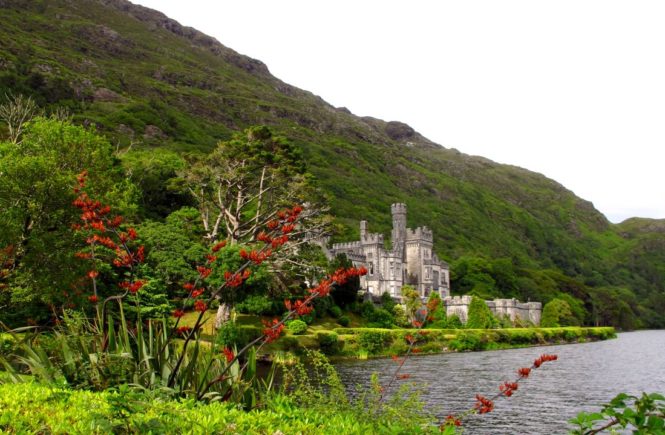


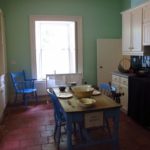
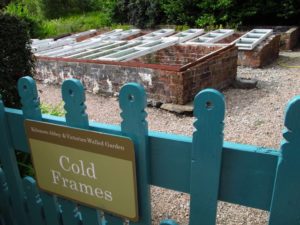
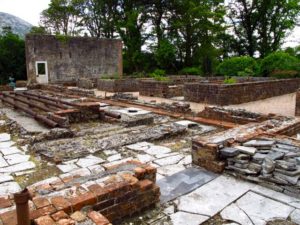
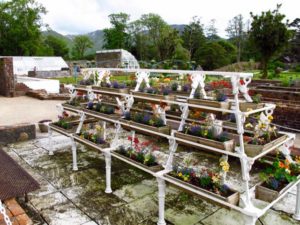


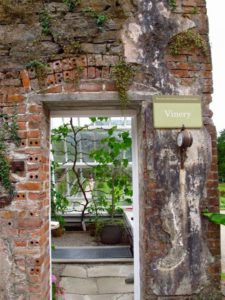
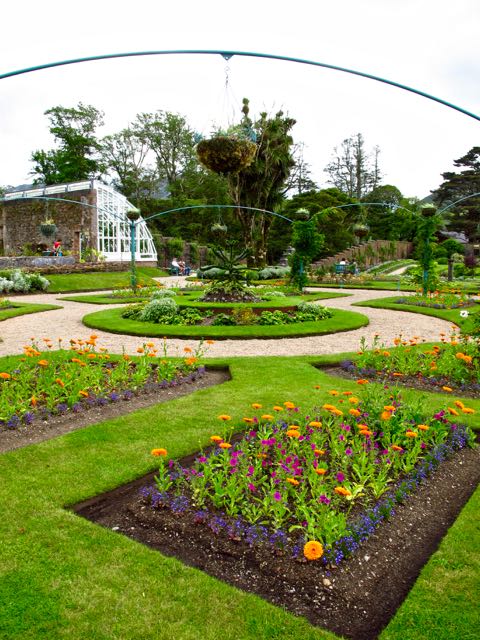
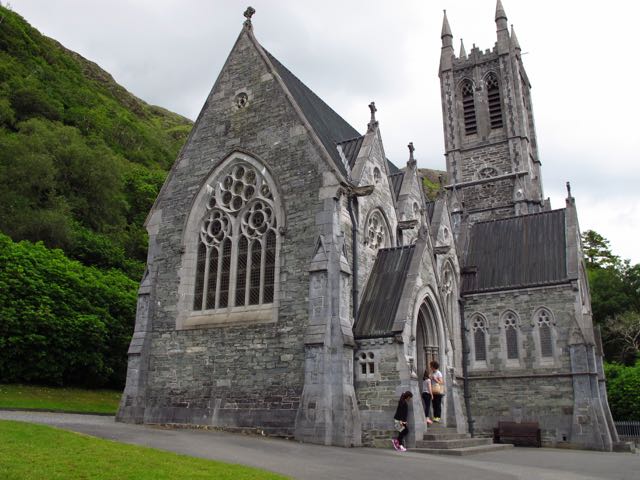






7 comments
It’s a beautiful setting and you captured it and told the story of its development well. I can hardly conceive of gardening in a space that large (although if I had a staff of gardeners living on site to help me maybe I’d feel differently). And it’s SO green! We don’t have those large expanses of green in Southern California.
I hear you. I call my own space the Microgarden – because it’s about the size of some people’s living room rugs. And as for green, I can say first-hand that they call it the Emerald Isle for good reason. Thanks for dropping by!
Thank you for the lovely virtual tour! Another friend recently blogged about Kylemore Abbey, which roused my interest; and your post gives me much more perspective on the gardens themselves and the general history. Such a magnificent setting certainly deserved the beautiful estate that was created. And it’s wonderful that preservation and restoration has extended to the gardens. Having said which, I wonder when Victorian planting styles will find a contemporary proponent? 😉
Quite a few years ago, Amy, I was first introduced to beds like these in a private garden on the Riverdale garden tour here in Toronto. The house was a cottage on Broadview Avenue – which only means something to Toronto readers, I know – and was revealed, when the owners renovated, to be a log cabin underneath all the decor-detritus of the years. The owners felt that their Victorian garden was a good fit for the age of the home. The garden is no longer there, sadly. Even though their front yard was tiny, all that intricate lawn edging was probably too much to manage. But it was an education for me.
Back in 2010, my co-blogging sister, Sarah, also wrote about Toronto artist Vivian Reiss, whose garden includes paisley-inspired garden beds similar to these. That post will turn up if you plug Vivian’s name into our search field.
Who knows; what goes around comes around. The heritage and heirloom veggies are great examples. But with the trend towards low-maintenance, I’m not picturing a return to those cut-outs in the lawns anytime soon.
The posts on Vivian Reiss are certainly inspiring – thanks! 🙂
Thanks for a trip down memory lane! I used to live in Co. Mayo and we witnessed the start of the garden’s revival. The landscape is awesome and I’m pleased to see how well the gardens have come on since. I suppose you went to see McIlhenny’s garden –Glenveagh in Donegal– too? For me one of the best, just takes your breath away. Greetings from France, Annette
No, Annette, I didn’t know about Glenveagh, but thanks for the tip. On both my trips to Ireland, I was travelling with non-gardeners who had limited tolerance for garden visits. But I’m making a wish-list for next time, should it ever happen.